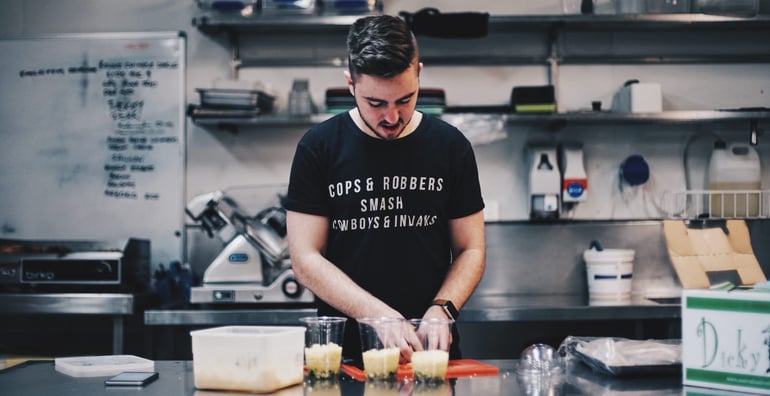Today's post comes from our friends over at Crowdfooding, a crowdfunding platform that helps foodpreneurs grow their businesses and redefine the future of food. The company's co-founder, Alessio D'Antino, shares the five most important pieces of advice he's learned while working with thousands of brands in his career, from when to start selling to why data to key to rapid growth:
Since I’ve started building Crowdfooding almost 2.5 years ago, I believe I’ve been engaging with more than 2,000 food and drink entrepreneurs from all over the world and I spend a great amount of time advising quite a few of them on a daily basis (and I love it). Thus, since I’ve been asked by many food entrepreneurs to share some tips about building a food business, I’ve decided to capture the five most important pieces of advice I often find my self giving to very early stage startups.
1. Focus on the product and keep it simple
Get busy in your kitchen make small batches and go out to make people trying your product. Product is the king, so spend the least possible time developing the rest (eg. branding, packaging, IP protection). I’m not saying those aren’t important, but at the beginning it’s not your priority. And yes, when you start you don’t need an expensive commercial kitchen to begin with or professional tools. Remember you need to validate whether you can make a product people want.
2. Start selling from day one & ask for feedback
The best (and only) validation for your product is sales. Start from the low hanging fruits: your friends, colleagues, neighbours are the best beta testers for your product. Once you feel you’ve created something people may like, get a stall at a local market to scale your test by selling your products to as many strangers as you can.
3. Be obsessed with gathering data
Data is your compass for making informed decisions. Ask all the people who try your product for their email address. Then build a simple survey (eg. using Google Forms or Typeform) and send it to all the people who get to try your product, that’s the only way you can ensure you can improve your product by capturing their feedback.
Extra tip: Usually tech people are pretty good at collecting data, if you have a geek friend ask her/him to help you out with it 😉
4. Review feedback and be ready to go back to the drawing board
Put your (best) ‘I don’t take it personally’ hat on and be completely open in this process, I know it’s your baby but in order to succeed in this game you need to develop a product that people love and (more importantly) want to keep buying. Once you have a new version of it, send/give it to all your customers and ask for more feedback. You need to be prepared to ‘lose money to make money’: send samples, attend events to learn from fellow entrepreneurs and use every occasion you have to tell your story.
5. Success = selling + building your own tribe
Embracing selling early on is of pivotal importance. Understandably, most food entrepreneurs feel more at ease in their kitchen but with no sales they just can’t keep producing their products, right? Ultimately you’re the best person to sell it…if you think about it, none knows the recipe, how good are the ingredients you put in it, and so on, better than you do.
It’s never too early to start building your community so do the following:
- Collect contact details for all your beta testers or any person who gets to try your products
- Open a Facebook/Twitter/Instagram page for your business and use it to show your progresses
- Focus on building your community and foster it day after day with tons of content (eg. pictures of your latest batch of goodies, quote from friends, article with the latest trend of your industry, interview of your favorite entrepreneur)
You’ll be surprised about how active and engaged people become when you feed them with fresh content on social media every day 😉
Additional things to consider (thanks Julia from Nix&Kix & Tessa for your words of wisdom), especially for those developing CPGs (consumer package goods):
- Think about scale and COGS (cost of goods) early on: to successfully approach retailers you want to have a decent manufacturing capacity to (at least to fulfill their orders) and can offer interesting margins to list your products
- Don’t try to create new categories or rush into super-new ones: it’s easier to improve products within already established categories. Try to leverage the big guys’ publicity in your favor, ‘educating’ consumers is usually very expensive
To this end, as part of Crowdfooding’s offering for startups, we’re helping entrepreneurs with their marketing efforts by enabling them to sell their products through our ‘sales booster’ — to learn more visit Crowdfooding.co.uk or email info@crowdfooding.co. Editor's Note: This post originally appeared on the Crowdfooding blog.




